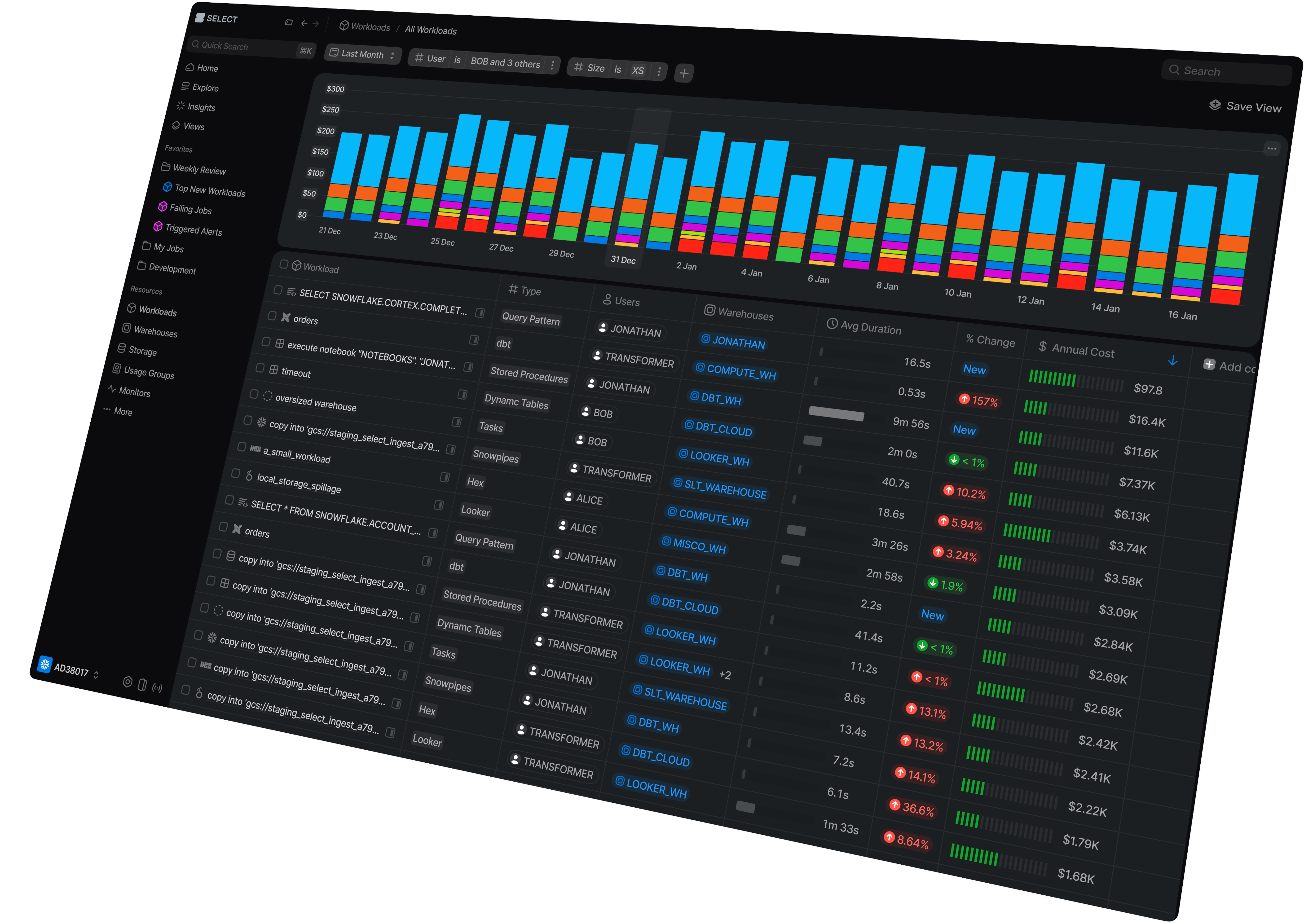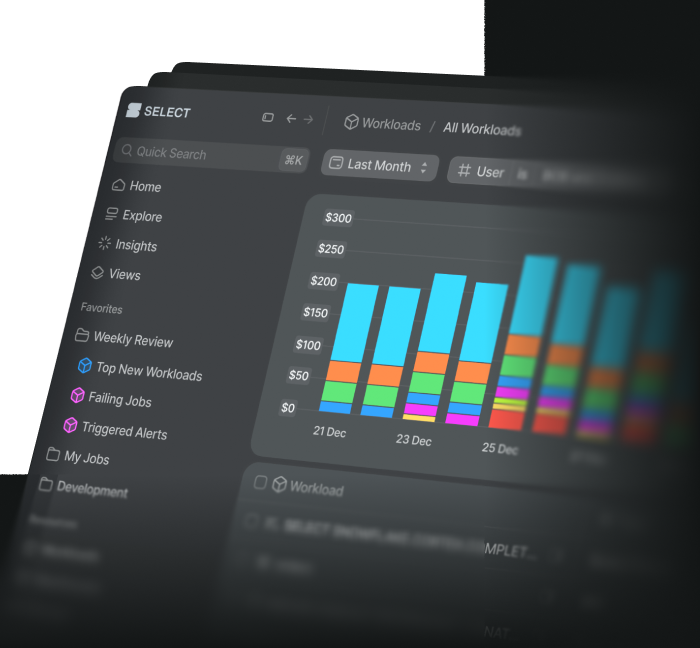
Last Month In Snowflake: March 2025 Product Updates
Jeff SkoldbergFriday, May 23, 2025
Snowflake has been busy releasing features! Let's dive in to the features released in March 2025, focusing on Administration, SQL Updates, and Data Pipeline Updates.
Snowflake Administration
Auto Sensitive Data Classification
This feature is Generally Available as of March 6, 2025. See docs for details.
What It Is
Automatic Sensitive Data Classification is a serverless feature in Snowflake that enables the automatic detection and tagging of sensitive data within your tables. Users create and assign a classification profile to a schema, enabling Snowflake to monitor and tag sensitive columns, including PII and financial data.
Why It Matters
This feature helps organizations enhance their data governance and compliance posture. By automatically identifying and tagging sensitive data, organizations can:
- Ensure that appropriate access controls and data protection measures are applied.
- Demonstrate compliance with data privacy regulations like GDPR, CCPA, and HIPAA.
- Reduce the risk of data breaches by maintaining an up-to-date inventory of sensitive data.
The automation of this process minimizes manual effort, reduces human error, and ensures consistency in data classification across the organization.
Grant database roles to a Snowflake Native App
This feature is in Public Preview as of March 17, 2025. See docs for details.
What It Is
Granting Database Roles to a Snowflake Native App is a feature that allows providers to assign database roles to Snowflake Native Apps. This includes roles within databases imported from data shares or the SNOWFLAKE database. By granting these roles, the native app can access specific database objects, such as tables, within the consumer's account.
Why It Matters
This capability enhances the flexibility and security of Snowflake Native Apps by enabling fine-grained access control. Providers can specify exactly which database objects the app can access, ensuring that consumers maintain control over their data. This is particularly beneficial for applications that require access to shared data or need to interact with specific datasets within a consumer's environment.
Disable downloading of data in the UI
This feature is Generally Available as of March 17, 2025. See docs for details.
What It Is
DISABLE_UI_DOWNLOAD_BUTTON Parameter: Snowflake has introduced a new object parameter named DISABLE_UI_DOWNLOAD_BUTTON. This parameter allows administrators to control the availability of the download button in both the Snowsight web interface and the Classic Console. By setting this parameter, organizations can prevent users from downloading data directly through the user interface.
Why It Matters
Some organizations may want to prevent exporting data for security reasons (data theft) or data governance reasons (shadow BI). This control is particularly useful in regulated industries or scenarios where strict data governance policies are in place.
Schema-level replication for failover groups
This feature is Generally Available as of March 27, 2025. See docs for details.
What It Is
Schema-Level Replication for Failover Groups is a feature in Snowflake that allows administrators to replicate specific schemas within a database across multiple accounts using failover groups. This provides more granular control over data replication, enabling organizations to replicate only the necessary parts of a database rather than the entire database.
Why It Matters
This feature is significant for organizations that require selective replication of data for purposes such as regional compliance, data sovereignty, or targeted data sharing. By replicating only necessary schemas, organizations can optimize resource usage and maintain tighter control over their data distribution.
SQL Updates
Asynchronous Child Jobs
This feature is Generally Available as of March 5, 2025. See docs for details.
What It Is
Asynchronous Child Jobs in Snowflake Scripting allow stored procedures to execute multiple SQL statements concurrently. By using the ASYNC keyword, developers can initiate queries—such as SELECT, INSERT, or UPDATE—to run in parallel as background tasks within a single stored procedure.
Why It Matters
This feature enhances the performance and scalability of data processing within Snowflake. By running multiple operations in parallel, developers can reduce the overall execution time of complex procedures, leading to faster data processing and more efficient resource utilization, and ultimately cost savings.
Search optimization: Support for column collations
This feature is Generally Available as of March 12, 2025. See docs for details.
What It Is
Search Optimization Support for Column Collations is an enhancement to Snowflake's Search Optimization Service. This feature allows the service to improve the performance of queries on columns that have a COLLATE clause defined. Collation determines how string comparison is performed, which is essential for sorting and filtering text data according to specific linguistic rules.
Why It Matters
This enhancement extends the benefits of search optimization to a broader range of queries, particularly those involving locale-specific string comparisons. Snowflake improves query speed for columns with collation, making language-specific sorting and filtering faster.
New File Format: XML Format
This feature is Generally Available as of March 27, 2025. See docs for details.
What It Is
XML File Format Support refers to the ability to define a file format of type XML in Snowflake. This feature allows users to create named file formats that specify how XML files should be interpreted when loading data into Snowflake tables or creating external tables. By defining an XML file format, users can set parameters such as STRIP_OUTER_ELEMENT and DISABLE_SNOWFLAKE_DATA, which control how the XML data is processed during ingestion.
Why It Matters
While Snowflake has long allowed parsing XML data in variant columns using functions like XMLGET, the introduction of XML file format support streamlines the data loading process. It allows users to control how XML files are loaded, improving efficiency and ensuring consistent parsing across large or varied datasets.
Spread Operator
This feature is Generally Available as of March 27, 2025. See docs for details.
What It Is
Spread Operator (**) in Snowflake SQL is a new expansion operator that allows you to expand an array into a list of individual values within SQL expressions. This operator is particularly useful in scenarios such as:
- Using
INclauses with arrays - Calling system-defined functions like
COALESCE,GREATEST, andLEASTwith array inputs - Passing arrays as arguments to SQL user-defined functions
- Utilizing arrays in Snowflake stored procedures with bind variables
The syntax is straightforward: ** <array>.
Why It Matters
The introduction of the spread operator enhances the flexibility and readability of SQL code in Snowflake. It simplifies the process of working with arrays by allowing direct expansion within SQL statements, reducing the need for complex unnesting or iterative logic. This leads to more concise and maintainable code, especially when dealing with dynamic lists of values.
Data Pipeline Updates
Dynamic tables: Maximum number of dynamic tables in an account increased to 50,000
This feature is Generally Available as of March 12, 2025. See docs for details.
What It Is
Snowflake has increased the maximum number of dynamic tables allowed per account from 10,000 to 50,000. Dynamic tables are a feature in Snowflake that enable the creation of tables whose data is automatically refreshed based on a defined query and schedule.
Why It Matters
This enhancement is significant for organizations that manage large-scale data pipelines. By allowing up to 50,000 dynamic tables per account, Snowflake provides greater flexibility and scalability, enabling more complex and extensive data workflows without hitting system-imposed limits.

Jeff Skoldberg is a Sales Engineer at SELECT, helping customers get maximum value out of the SELECT app to reduce their Snowflake spend. Prior to joining SELECT, Jeff was a Data and Analytics Consultant with 15+ years experience in automating insights and using data to control business processes. From a technology standpoint, he specializes in Snowflake + dbt + Tableau. From a business topic standpoint, he has experience in Public Utility, Clinical Trials, Publishing, CPG, and Manufacturing.
Want to hear about our latest Snowflake learnings?Subscribe to get notified.
Get up and running in less than 15 minutes
Connect your Snowflake account and instantly understand your savings potential.


